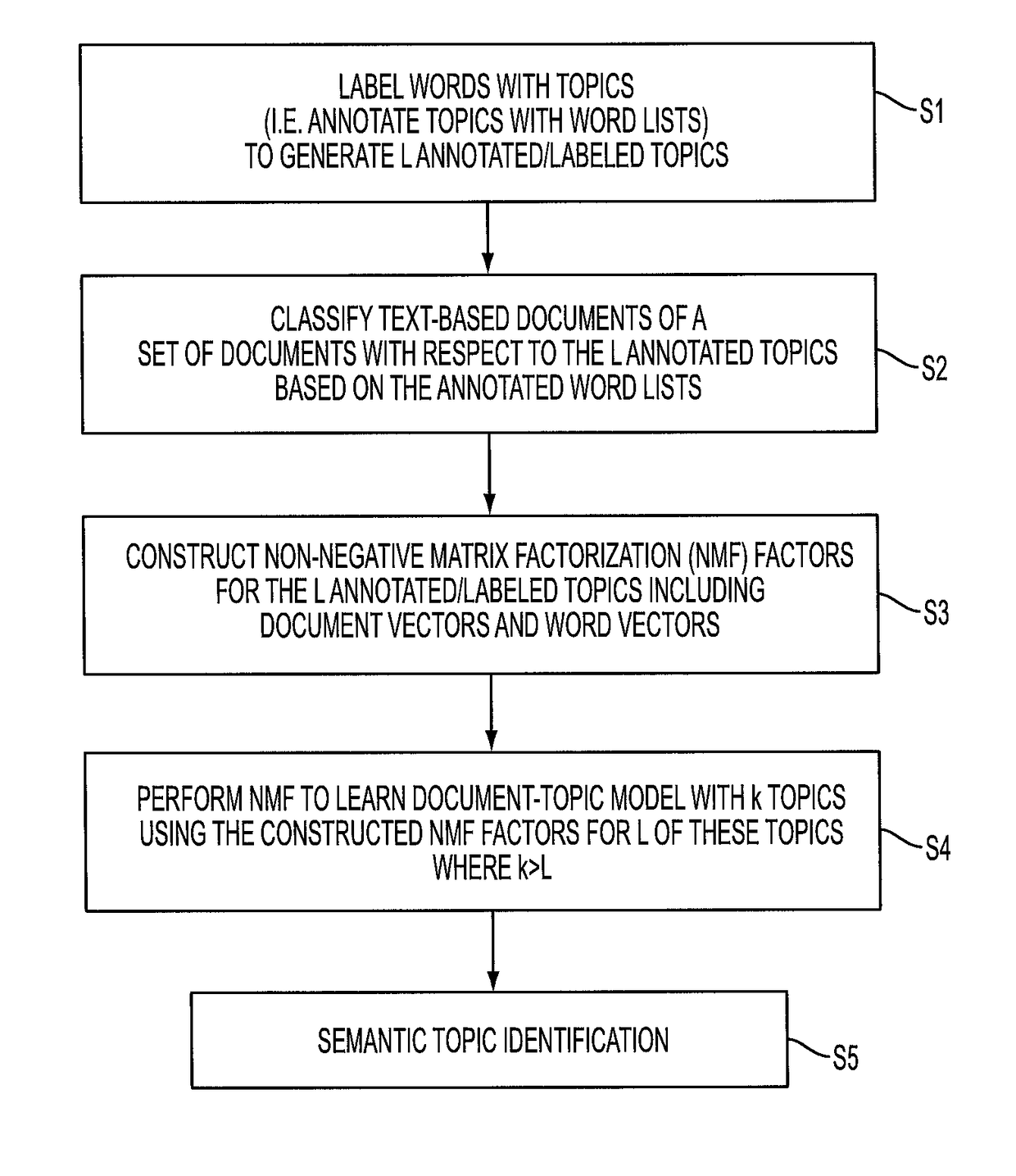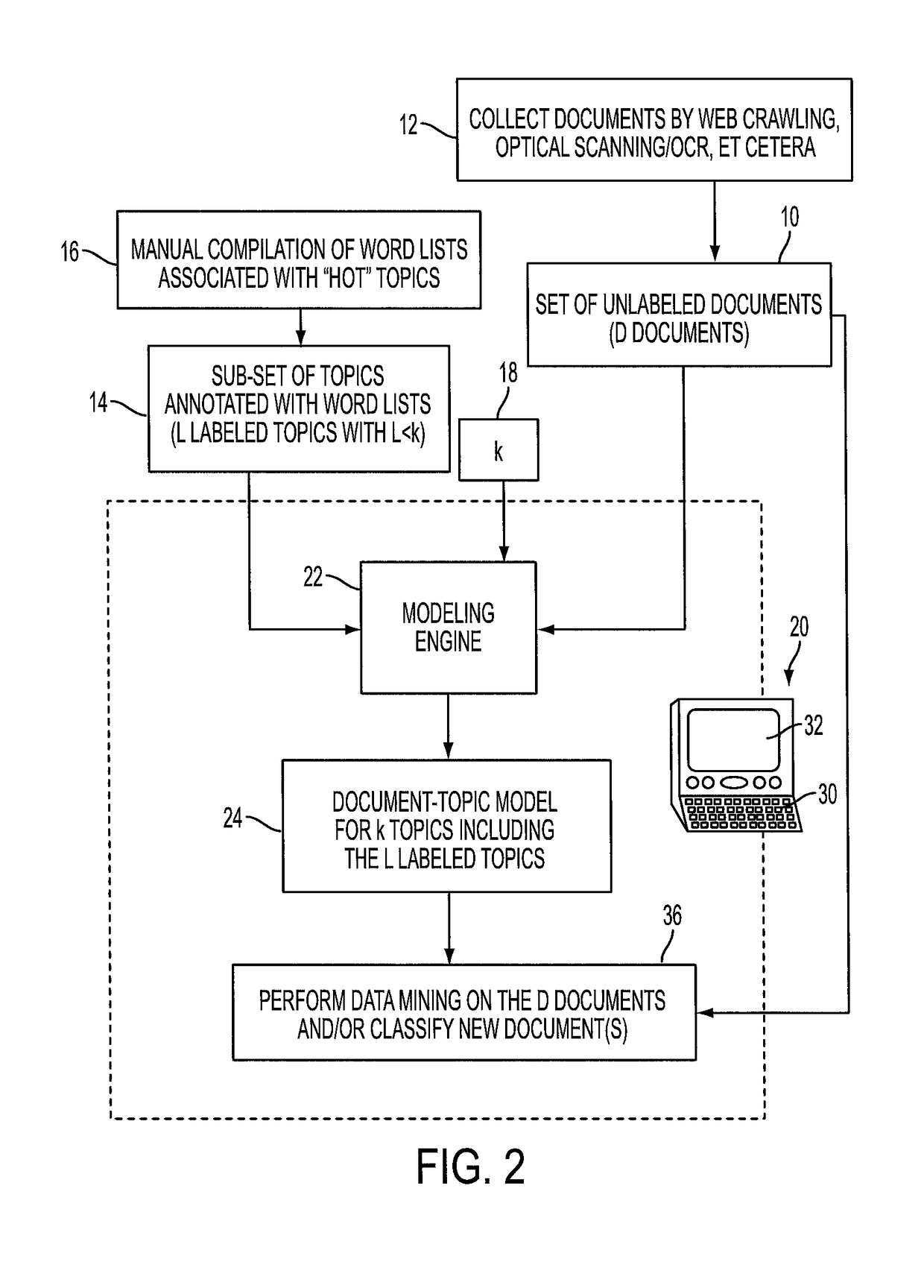Joint approach to feature and document labeling
a document labeling and feature technology, applied in relational databases, instruments, computing models, etc., can solve the problems of laborious user interfacing, insufficient knowledge to identify and define specific topics pertaining to these areas, and insufficient information available to construct accurate topic definitions
- Summary
- Abstract
- Description
- Claims
- Application Information
AI Technical Summary
Benefits of technology
Problems solved by technology
Method used
Image
Examples
Embodiment Construction
[0014]With reference to FIG. 1, disclosed herein are data mining systems that leverage feature labeling and document labeling. The illustrative embodiments pertain to text-based documents, by which it is meant that each document of the set of documents contains sufficient textual content to be semantically characterized based on its text content. The text-based document may comprise entirely text, or may comprise text and other content (e.g., a multimedia document containing text, images, video clips, audio clips, and so forth). Each document is assumed to be in an electronic form with the text represented in a format enabling words to be identified, e.g. as ASCII strings or the like. The documents may be provided directly in electronic form (e.g. produced by a word processor, slideshow presentation program, or so forth) or may be paper documents that are optically scanned and processed by optical character recognition (OCR) to generate ASCII text representations of the words of the...
PUM
 Login to View More
Login to View More Abstract
Description
Claims
Application Information
 Login to View More
Login to View More - R&D
- Intellectual Property
- Life Sciences
- Materials
- Tech Scout
- Unparalleled Data Quality
- Higher Quality Content
- 60% Fewer Hallucinations
Browse by: Latest US Patents, China's latest patents, Technical Efficacy Thesaurus, Application Domain, Technology Topic, Popular Technical Reports.
© 2025 PatSnap. All rights reserved.Legal|Privacy policy|Modern Slavery Act Transparency Statement|Sitemap|About US| Contact US: help@patsnap.com



